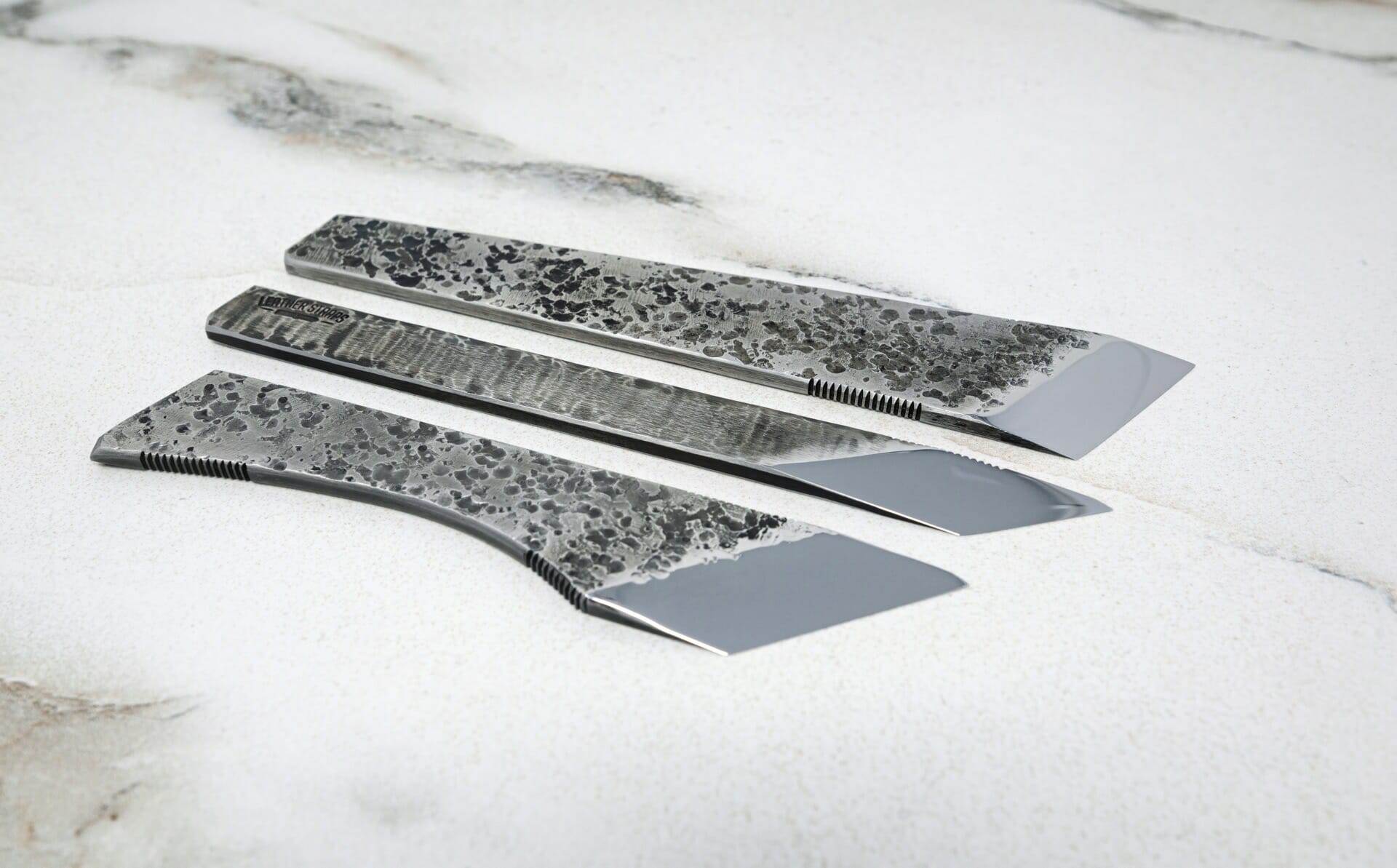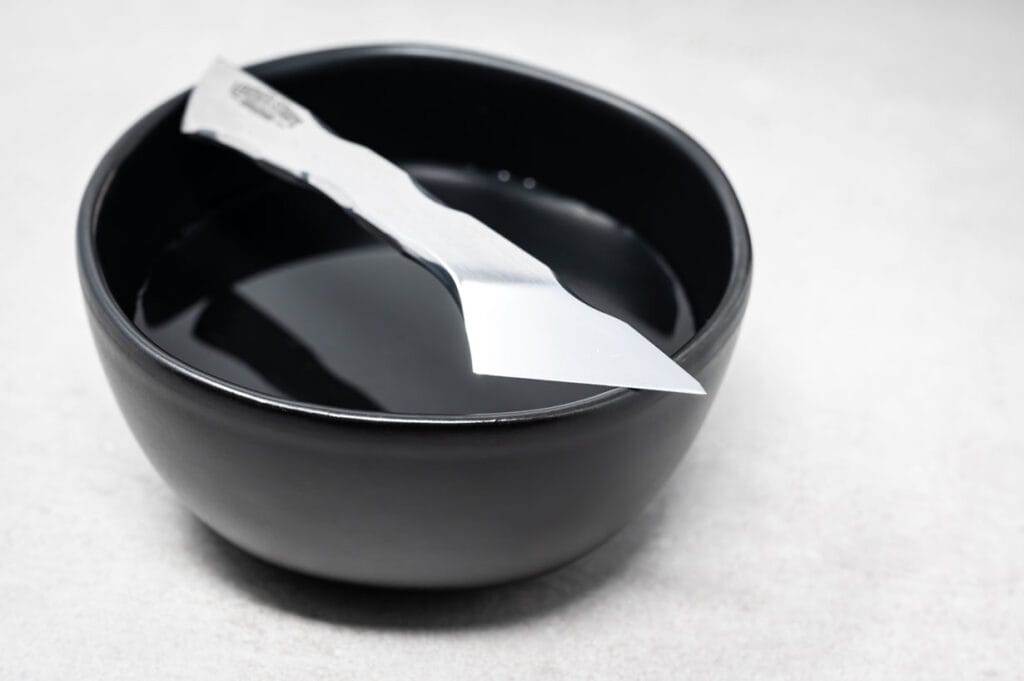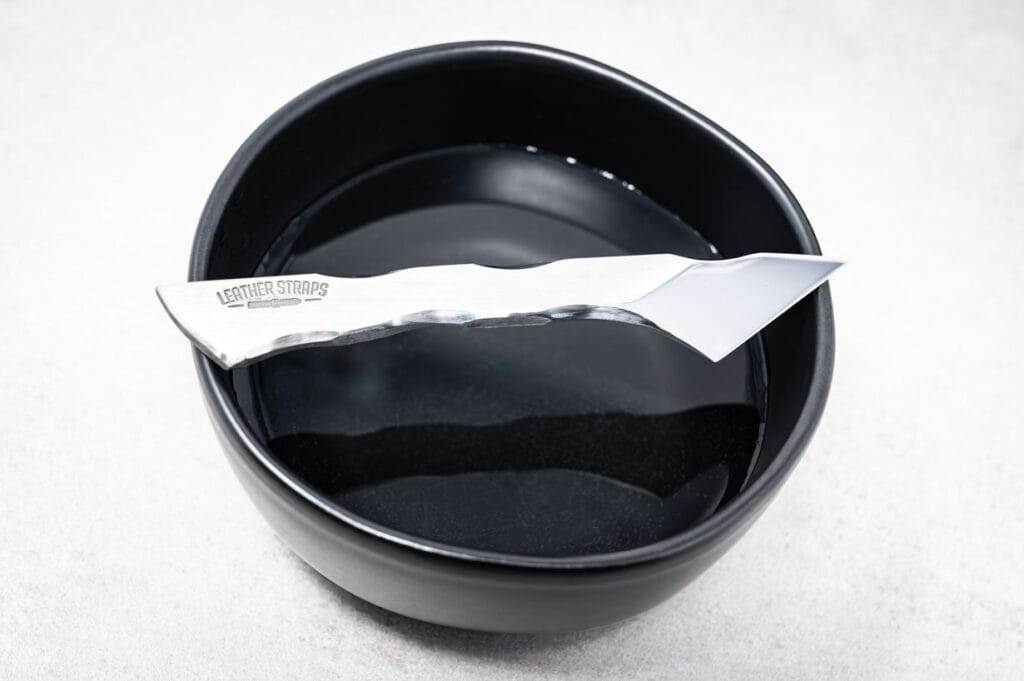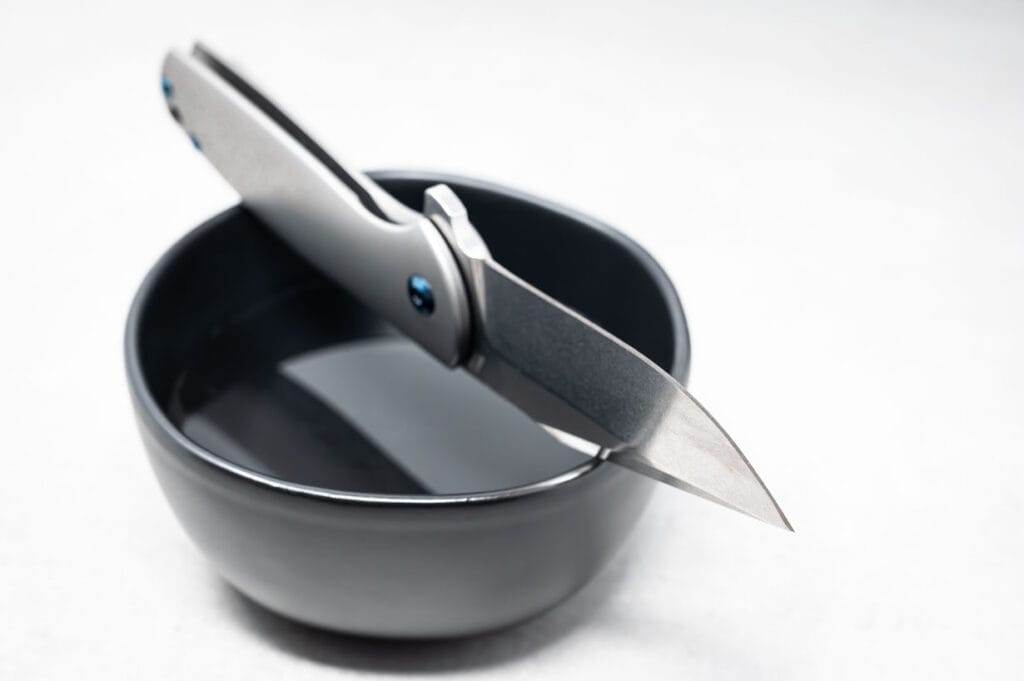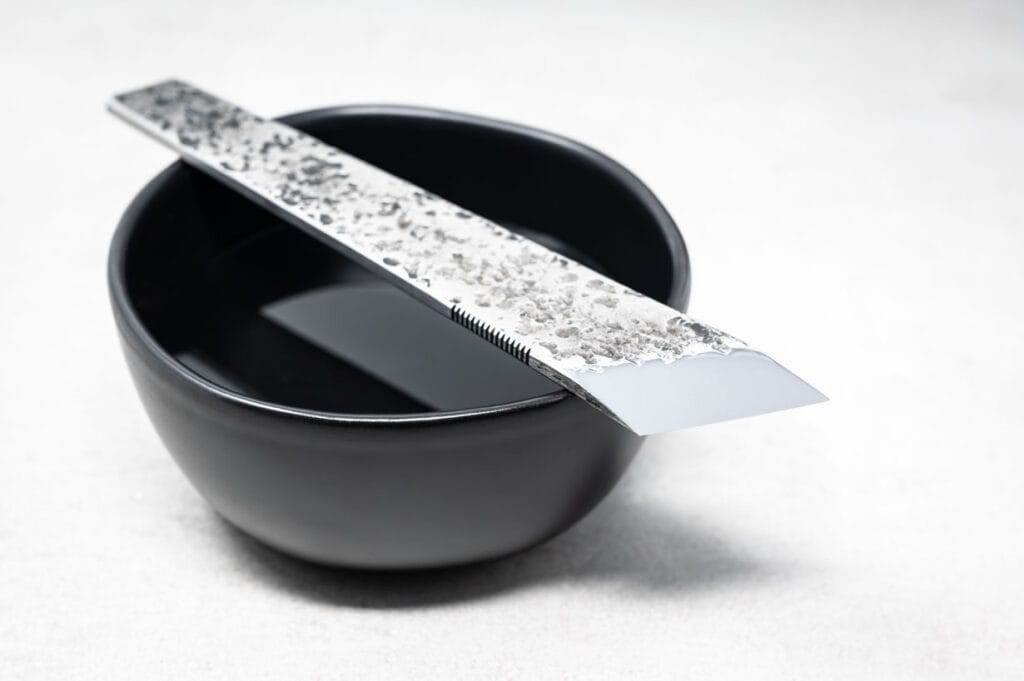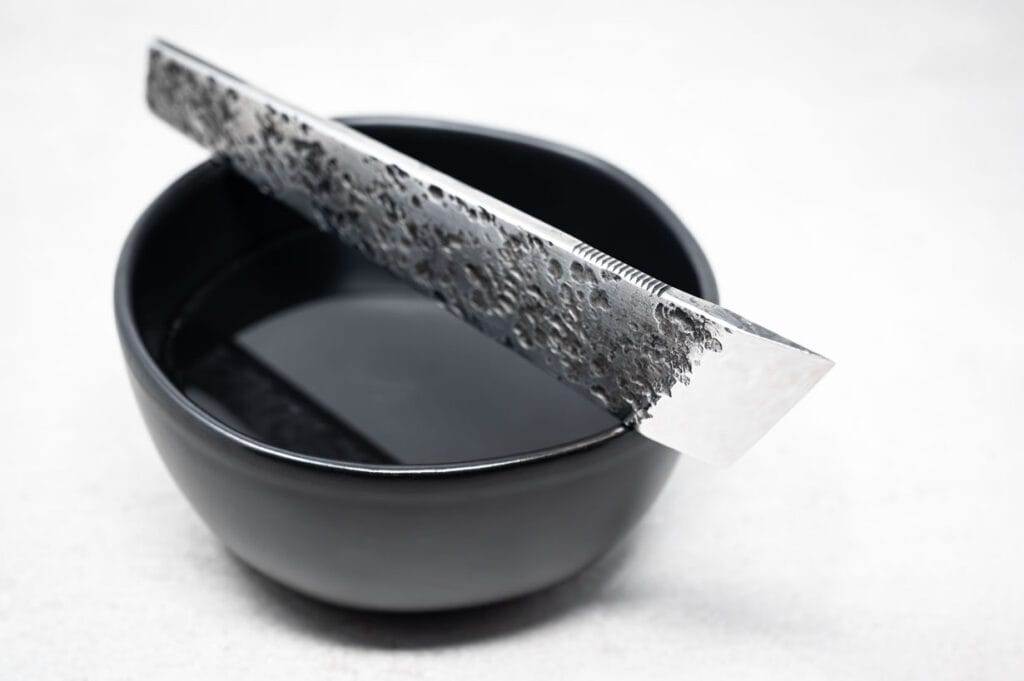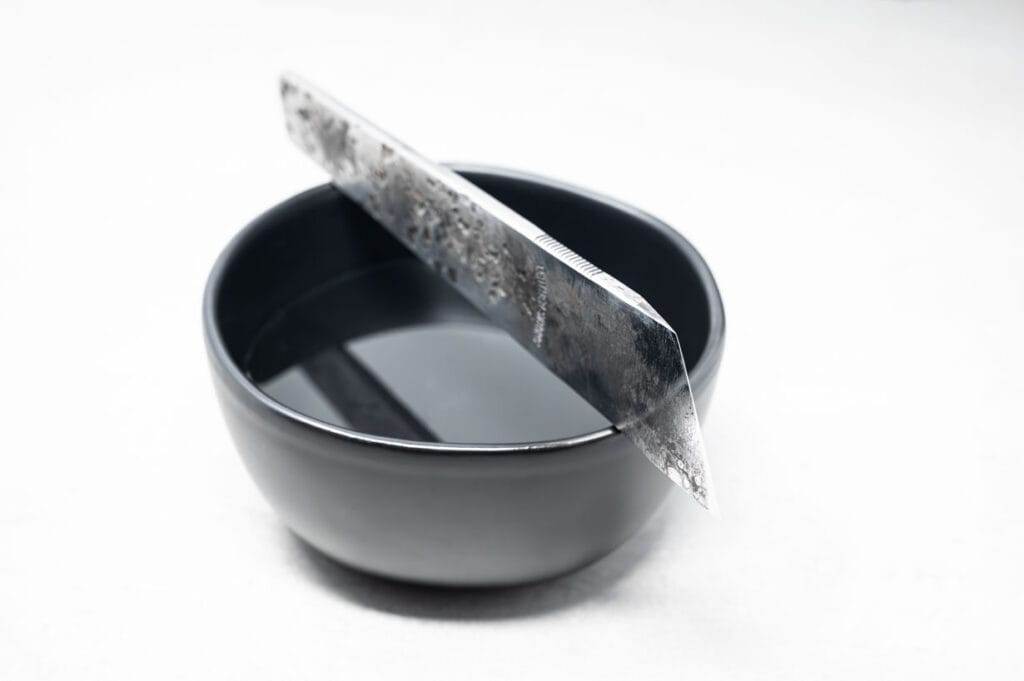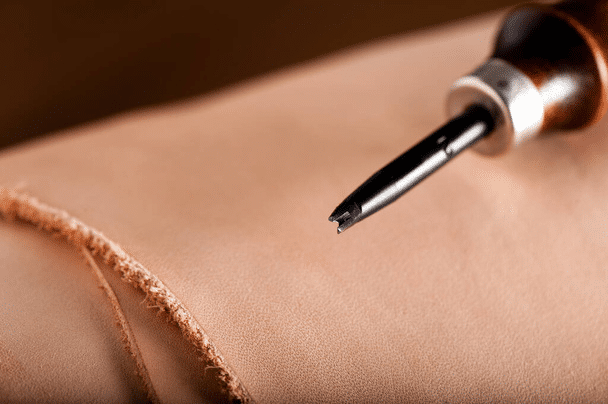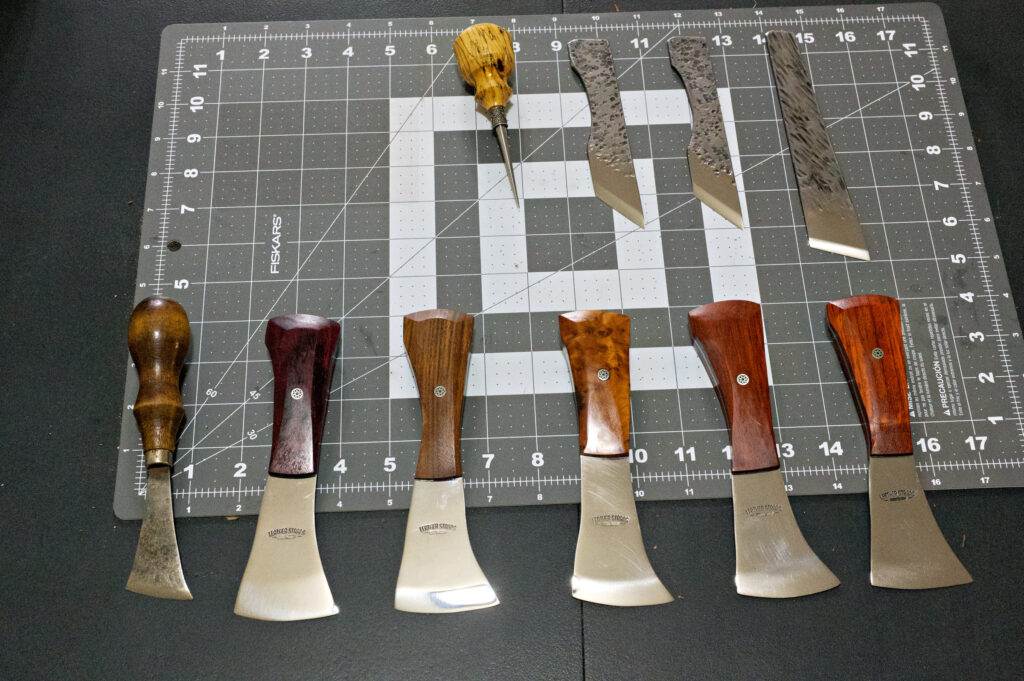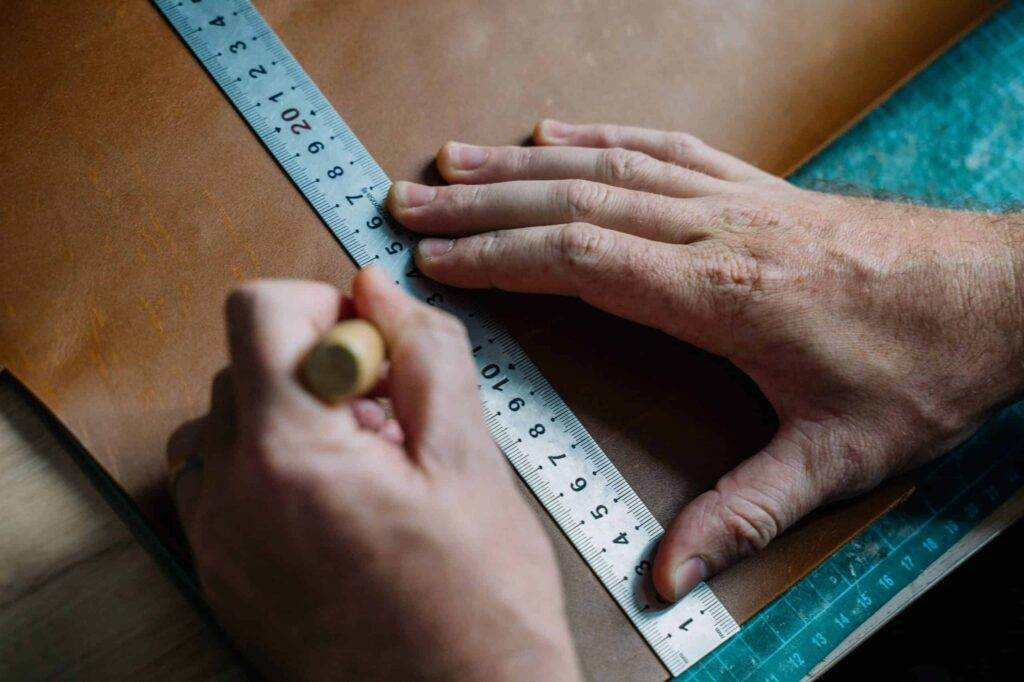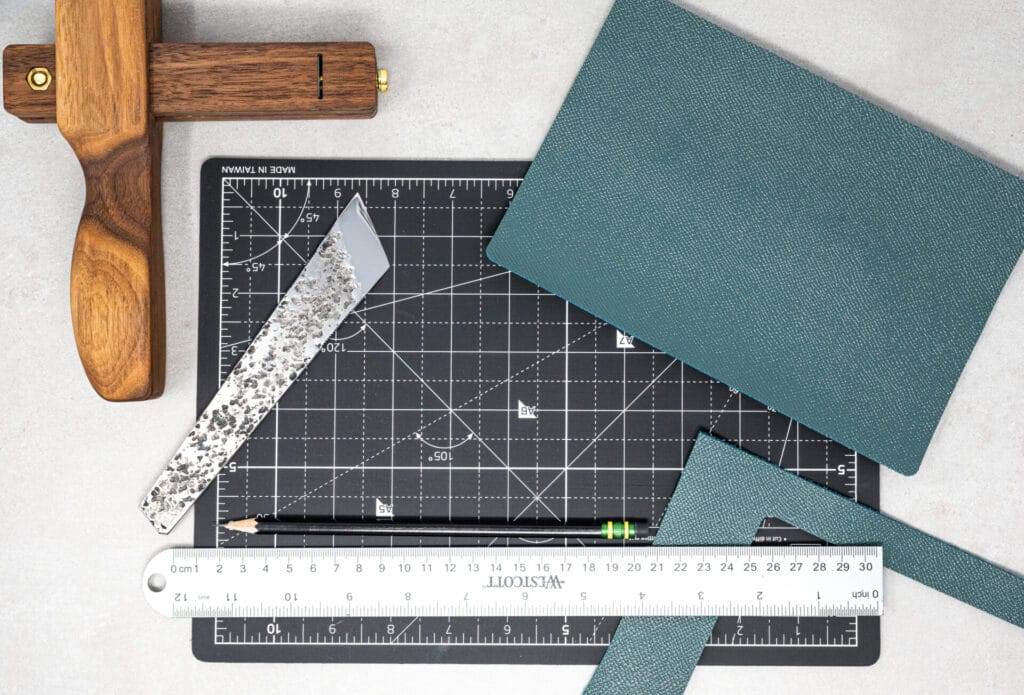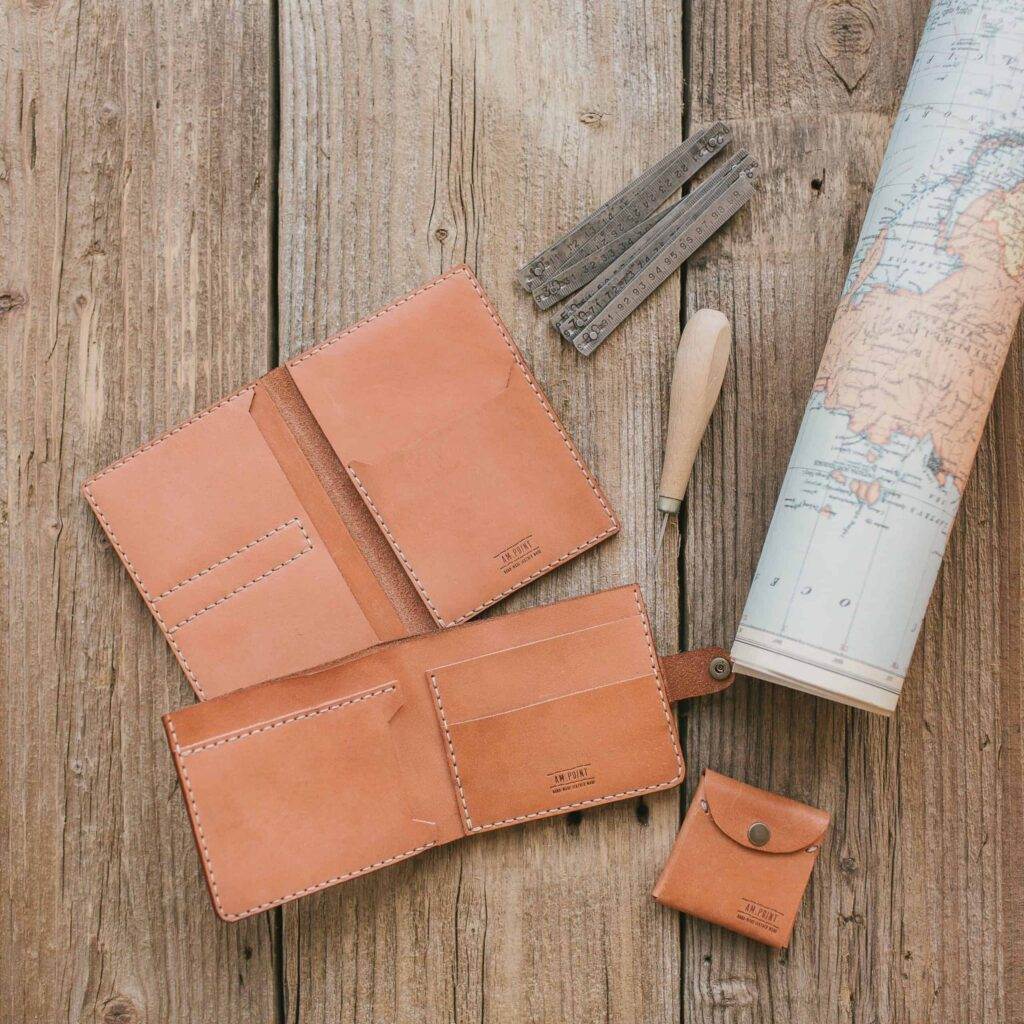Exploring the Anatomy of the Blade: Zero Edge, Secondary, and Micro Bevels
If you’ve ever held a knife, walked on a hardwood floor, or admired the sleek lines of a well-designed tool, you’ve interacted with a bevel. Bevels – the angled surface formed on the edge of a material, whether it’s a leather scalpel knife or a pocket knife – play a crucial role in both the functionality and aesthetics of a product. In this article, we’ll delve into the world of bevels, focusing on three specific types: micro bevels, secondary bevels, and zero edge bevels.
Understanding these different edge styles is vital for making an informed decision about products, from the knives in your leather craft shop to the knives in your kitchen. Join us as we explore the unique characteristics; pros and cons of each bevel type, arming you with the knowledge to choose the right bevel for your needs.
What is a bevel?
One might ask, “what is a bevel?” A bevel is a term that is deeply integrated into the world of knife manufacturing. It’s essentially an edge that isn’t perpendicular to the faces of an object. Whether it’s on the edge of a kitchen knife or pocket knife, a bevel serves both a functional and aesthetic purpose. When it comes to knives, the bevel is situated on the blade, shaping the cutting edge.
There are several types of bevels you’ll commonly find, including micro, secondary, and zero edge bevels. Each has its own unique characteristics and utilities, which we will explore.
Micro Bevels
Let’s embark on the journey of understanding Micro Bevels. In essence, a micro bevel is a very small bevel found on the edge of a blade. This subtle feature, though small, plays a significant role in the use and aesthetic of knives.
Micro bevels are created using particular tools, such as honing rods or specialized sharpeners. They result in a distinct edge style, characterized by minor angles that buff the brink of your leather craft knives and tools.
Pros
One of the primary benefits of micro bevels is their ability to increase durability. For knives, a micro bevel can make the edge less susceptible to damage while maintaining sharpness.
Cons
The downside of micro bevels is the added complexity in sharpening for knives. A micro bevel requires more skill to maintain, which may deter novice enthusiasts.
These main pros and cons solidify micro beveled blades as a popular choice for many, providing a balance between functionality and aesthetics.
Secondary Bevels
Second in line, yet not secondary in importance, we delve into the realm of Secondary Bevels. As the word implies, these types of bevels are not the primary cut made on your blade, but an additional one, often found on the edge of Japanese-style knives and Western-style blades alike.
Creating a secondary bevel involves the use of industry-standard tools to grind a smaller angle on the first bevel of a knife. This process creates a sturdier edge, making it versatile for various functions.
Pros
The additional bevel increases the knife’s versatility and durability. It allows for a steeper, more robust edge that can withstand different tasks.
Cons
The challenge lies in the sharpening process, which could lead to chipping. The angle must be maintained consistently to prevent damage to your blade.
In conclusion, a secondary bevel adds a layer of strength to Japanese or Western-Style blades or any other edged tools, albeit at the cost of more careful sharpening.
Zero Edge Bevels
Defining Zero Edge Bevels, these are the pinnacle of sharpness in the realm of knives. Unlike a micro-bevel or secondary bevel, a zero edge bevel is defined by the absence of a bevel – a sharpened edge that goes directly from the body of the knife to the cutting edge, without any small angles in between.
Pros
The process for creating zero edge bevels involves precision work, often requiring specialized tools. The ultimate sharpness of this edge style is a major pro for leather crafting.
Cons
The fragility of the edge is a downside. This means your knives or tools could be more prone to damage, especially when subjected to heavy use or harsh materials such as glass cutting boards.
Therefore, while zero edge bevels offer unparalleled sharpness, they demand careful handling and maintenance to prevent damage and ensure longevity.
Differences between Bevel Types
In the vast arena of edge profiles, the micro bevel, secondary bevel, and zero edge bevel are the leading stars. Each offers a unique style and functionality for your leather craft knives and tools, making them ideal for different applications.
Micro Bevel
The micro bevel is the chameleon of the bevel world, with subtle enhancements. Its soft edges prevent damage and add a touch of sophistication to the blade.
Secondary Bevel
The secondary bevel is the jack-of-all-trades, offering versatility yet a risk of chipping. This bevel is generally spotted on Japanese-Style and Western-style knives.
Zero-Edge Bevel
The zero-edge bevel is a testament to sharpness and precision. However, its razor-thin edge calls for extra care in storing and usage to avoid fragility.
Understanding these differences helps in making informed decisions, be it for leather scalpels and skivers, leather craft tools, or even a kitchen knife in your collection.
Choosing the Right Bevel
When it comes to choosing the right bevel, the decision is often influenced by the purpose of the product, the material it’s made from, and personal preferences. It’s essential to consider these factors as they impact the functionality and aesthetics of your knife or flooring.
Purpose
Leather craft knives often benefit from zero edge bevels due to their extreme sharpness, while a pocket knife might prefer the use of micro bevels for their enhanced durability.
Material
Some materials might cope better with certain bevel types. A micro bevel might be ideal for a pocket knife, while a secondary bevel could be better suited for a chef knife.
Personal Preferences
Your preference plays a key role as well. Some might fancy the sophisticated look a beveled edge gives, while others may lean towards the simplicity of a zero edge.
In conclusion, understanding the differences between the micro, secondary, and zero edge bevels can guide you towards a satisfactory outcome. It’s your tools, your blade-make sure it’s your choice too!
Conclusion
In conclusion, understanding the differences between bevel types in both knives and tools is an essential part of making an informed decision about which to use. Each bevel type – micro, secondary and zero-edge-has its own unique advantages and disadvantages, affecting both functionality and aesthetics. Whether you’re selecting a knife for your leather craft or choosing the style of your interior floors, the choice of bevel can significantly influence the product’s performance and lifespan.
Preventing damage, enhancing aesthetics, or simply matching your personal style can all be achieved by choosing the right edge style. Remember, the key to satisfaction lies in understanding your needs and the role that each bevel type can play in meeting them.
Hopefully, this article has equipped you with a detailed definition and understanding of zero edges, beveled edges, and edge styles. For further assistance or to explore our product line, please feel free to connect with us through our website, or contact page.

